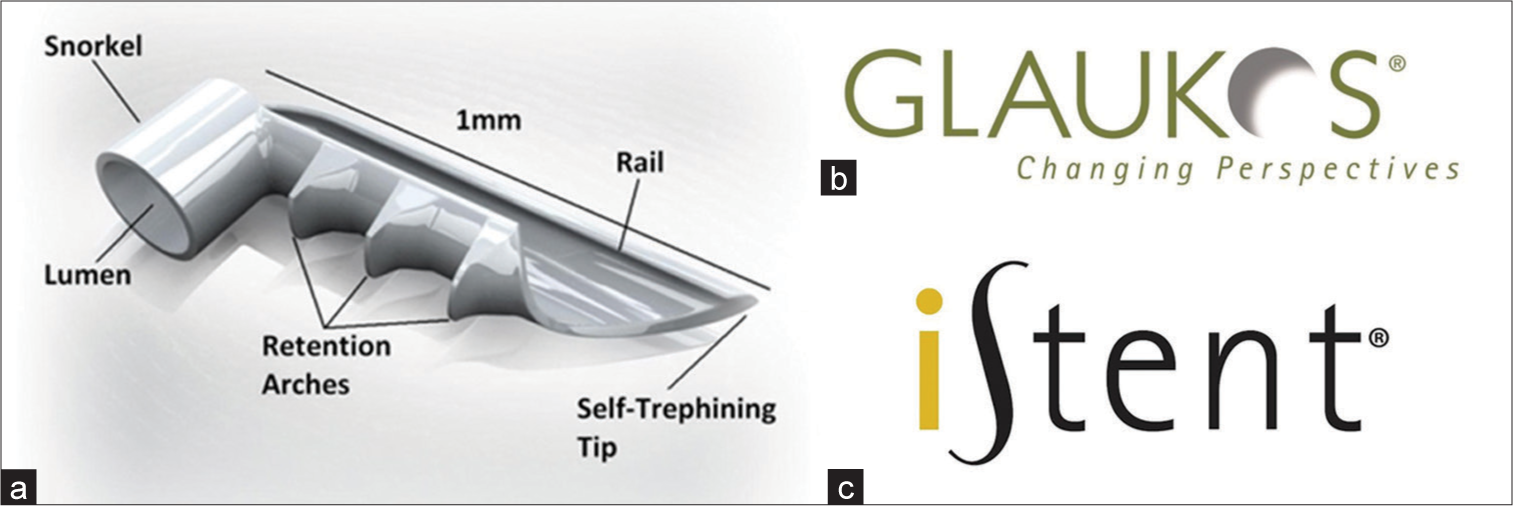Translate this page into:
The iStent video cassette pedagogy: An innovative teaching guide for minimally invasive glaucoma surgery platform
*Corresponding author: Prasanna Venkatesh Ramesh, Department of Glaucoma and Research, Mahathma Eye Hospital Private Limited, No. 6, Seshapuram, Tennur, Trichy - 620017, Tamil Nadu, India. email2prajann@gmail.com
-
Received: ,
Accepted: ,
How to cite this article: Ramesh PV, Ramesh SV, MP NK. The iStent video cassette pedagogy: An innovative teaching guide for minimally invasive glaucoma surgery platform. Glob J Cataract Surg Res Ophthalmol. 2024;3:82-3. doi: 10.25259/GJCSRO_8_2024
Dear Editor,
INTRODUCTION
Glaucoma is a leading cause of blindness worldwide. Shockingly, around 76 million people are affected by it, and this number is predicted to escalate to 111.8 million by 2040.[1] One of the significant concerns surrounding glaucoma treatment is its economic burden. The continuous and regular use of anti-glaucoma medications can be quite costly.[2,3] Additionally, the current surgical approach also has its own shortcomings.[4] Therefore, it’s crucial to explore alternative surgical management options. Minimally invasive glaucoma surgery (MIGS) offers us a reprieve from these setbacks.[5] MIGS is the key to the future of managing mild to moderate cases of glaucoma with a good safety and economic profile.
PURPOSE
In this video, we provide a comprehensive bouquet of teaching videos with tips and tricks required for an iStent neophyte to learn about the proper technique of iStent (G1 and G2) implantation and to tackle commonly experienced setbacks [Video 1]. It also showcases a series of combined MIGS procedures and simulated training with a holographic three-dimensional (3D) eyeball model.
Video 1:
Video 1:Video showing ‘the iStent video cassette pedagogy’.SYNOPSIS
This video compilation encloses the following teaching points.
The G1 iStent
The Glide: Proper implantation technique for G1 iStent [Figure 1]
Management of trabecular meshwork cheese wiring
The Nudge: Manoeuvres to confirm the position of the iStent
The Rebound: Tackling of iStent rebound due to trochar malfunction
Combined MIGS: G1 implant + Kahook dual blade goniotomy
Combined MIGS: G1 implant + Bent ab interno needle goniectomy.
The G2 iStent
Dimpling and Blanching: Proper implantation technique for G2 iStent
Lost but found: Correct method for retrieval of dislodges iStent.
THE OPHTHALMIC METAVERSE
In the field of ophthalmology education, a critical challenge for new residents and surgeons is understanding complex theoretical frameworks. A novel 3D simulator for iStent implantation practice addresses this challenge by providing a hands-on, immersive experience that enhances learning and skill development. This necessitates the ability to visualise detailed concepts effectively. To address this, we have developed an advanced cognitive tool, a 3D eyeball model integrated with real-time True Colour confocal images and angle structures providing a realistic learning experience unlike animated models. This interactive tool empowers users to explore different eye components with varying magnifications, enhancing e-learning in ophthalmology. Furthermore, our innovation extends to a 3D model for iStent. Users can utilise an advanced interactive 3D touch interface to insert the iStent into the trabecular meshwork, experiencing haptic feedback for improved learning of the insertion technique. This approach, utilising high-resolution confocal fundus images and photoreal visuals, revolutionises 3D learning in ophthalmology education, serving as a state-of-the-art pedagogical tool and facilitating e-counselling within a holographic environment.

- (a) iStent generation 1, (b) iStent company logo and (c) iStent registered trademark symbol.
HIGHLIGHTS
In this informative video, viewers will gain a comprehensive understanding of the proper procedures for implanting iStents. The video takes a thorough approach to showcase the techniques used for implantation while also managing typical issues that may arise during the process. In addition, the video offers a simulated training process for iStent implantation, allowing viewers to gain a deeper understanding of the process. The implantation techniques are demonstrated in great detail, providing viewers with a clear and concise understanding of the process.
Ethical approval
The Institutional Review Board approval is not required.
Declaration of patients consent
The authors certify that they have obtained all appropriate patient consent.
Conflicts of interest
There are no conflicts of interest.
Use of artificial intelligence (AI)-assisted technology for manuscript preparation
The authors confirm that there was no use of artificial intelligence (AI)-assisted technology for assisting in the writing or editing of the manuscript and no images were manipulated using AI.
Video available on:
Financial Support and Sponsorship
Nil.
References
- Epidemiology of glaucoma: The past, present, and predictions for the future. Cureus. 2020;12:e11686.
- [CrossRef] [Google Scholar]
- Review on cost of anti-glaucoma formulation available in India. Biomed Pharmacol J. 2022;15:1213-25.
- [CrossRef] [Google Scholar]
- Combating anti-glaucoma medication compliance issues among literate urban Indian population-has this fallen in our blind spot? J Clin Ophthalmol. 2021;5:472-5.
- [Google Scholar]
- Surgical management of glaucoma: An Indian perspective. Indian J Ophthalmol. 2011;59(Suppl 1):S118-22.
- [CrossRef] [PubMed] [Google Scholar]
- Commentary: Minimally invasive glaucoma surgery for a surgical take diversion: An economic perspective. Indian J Ophthalmol. 2023;71:566.
- [CrossRef] [PubMed] [Google Scholar]





